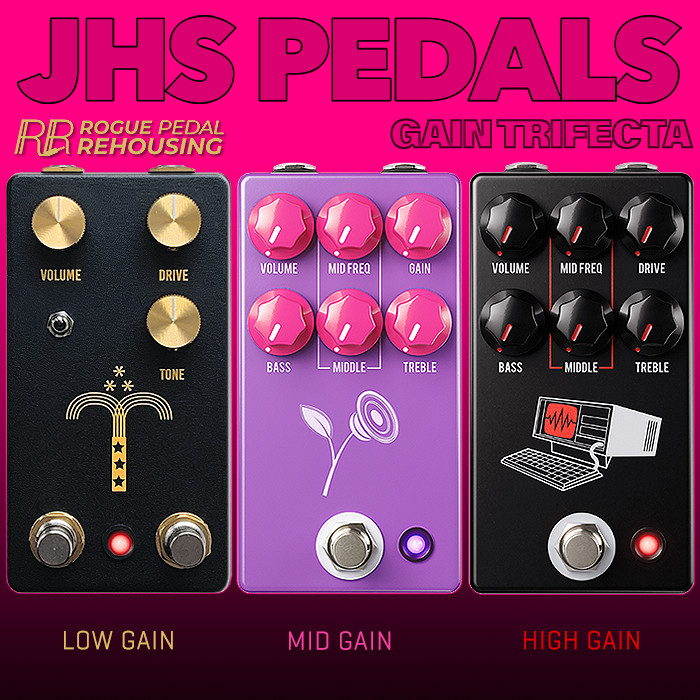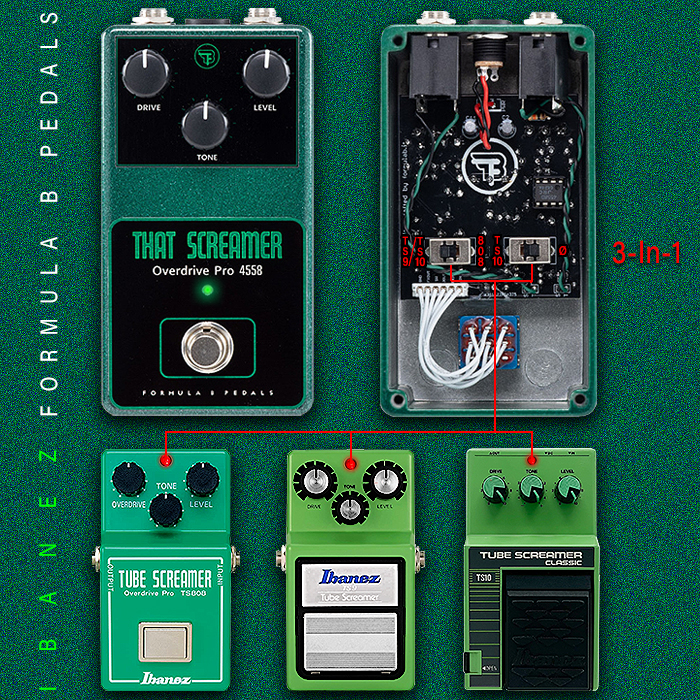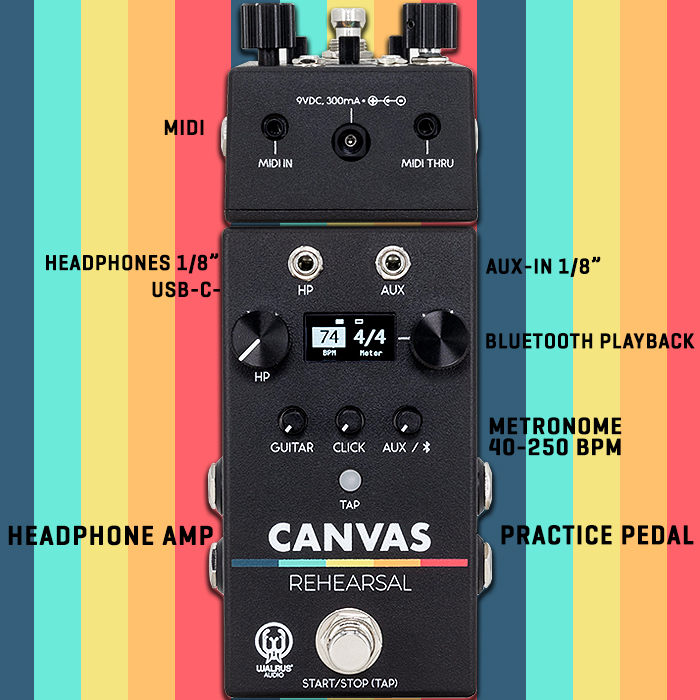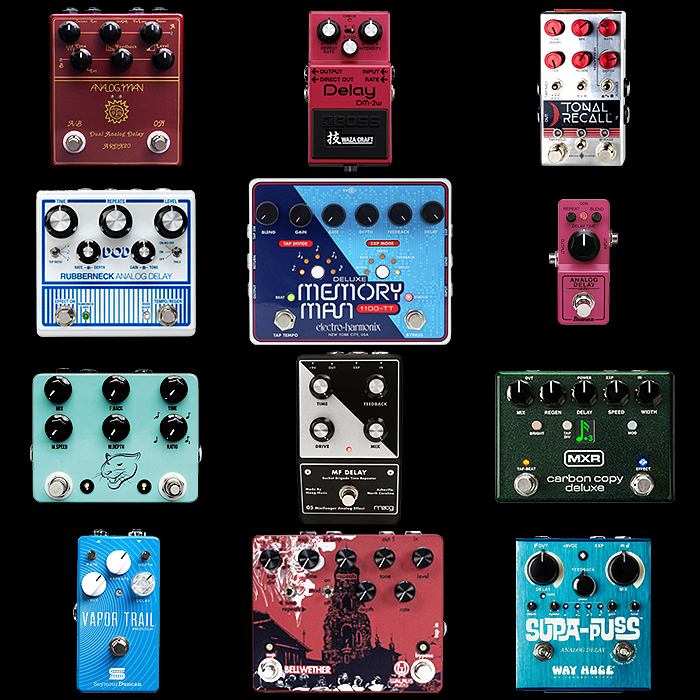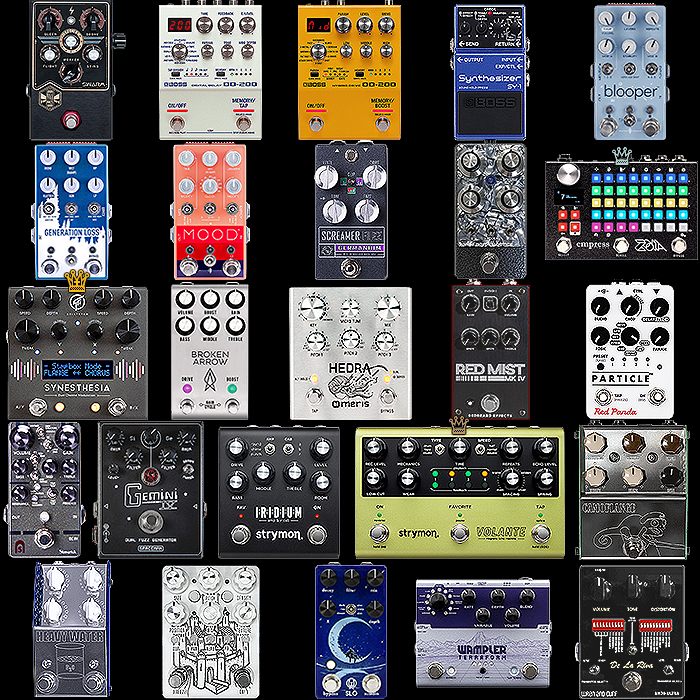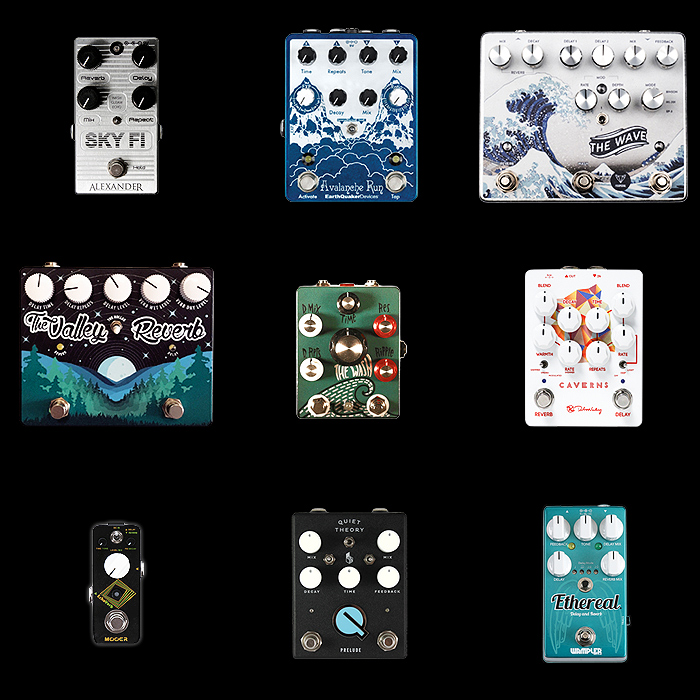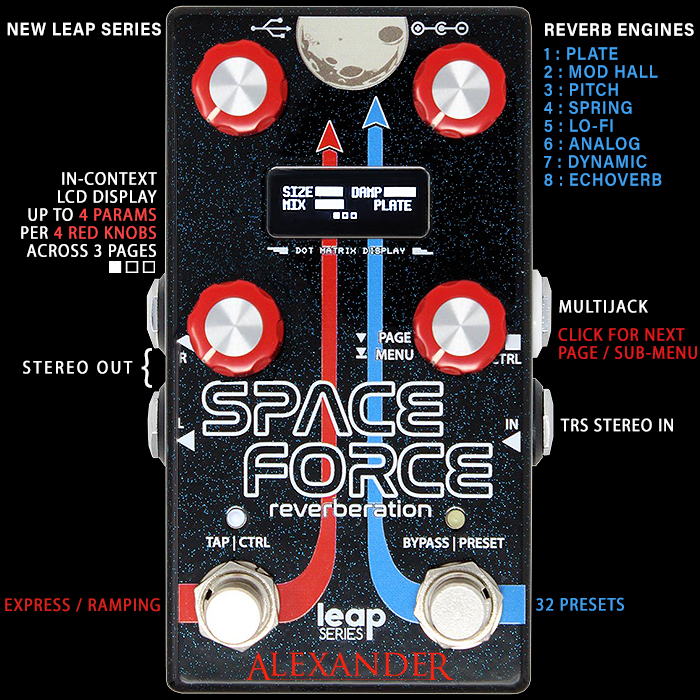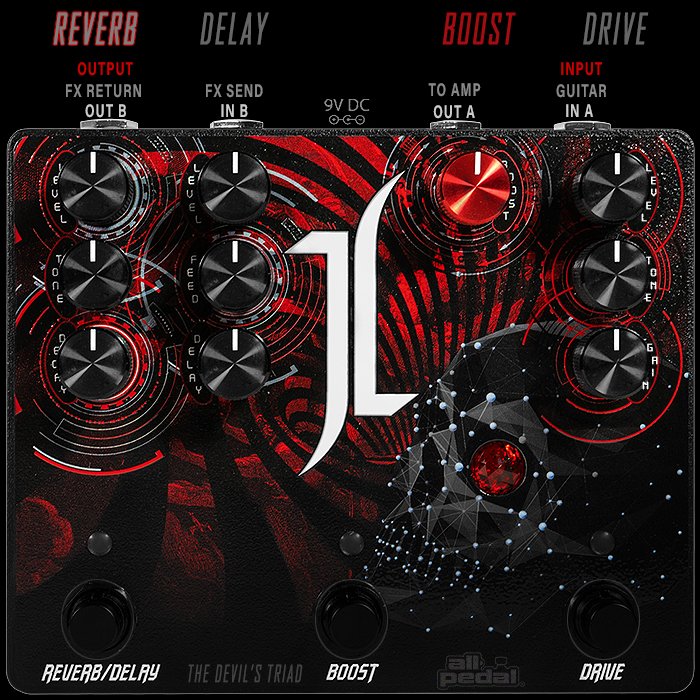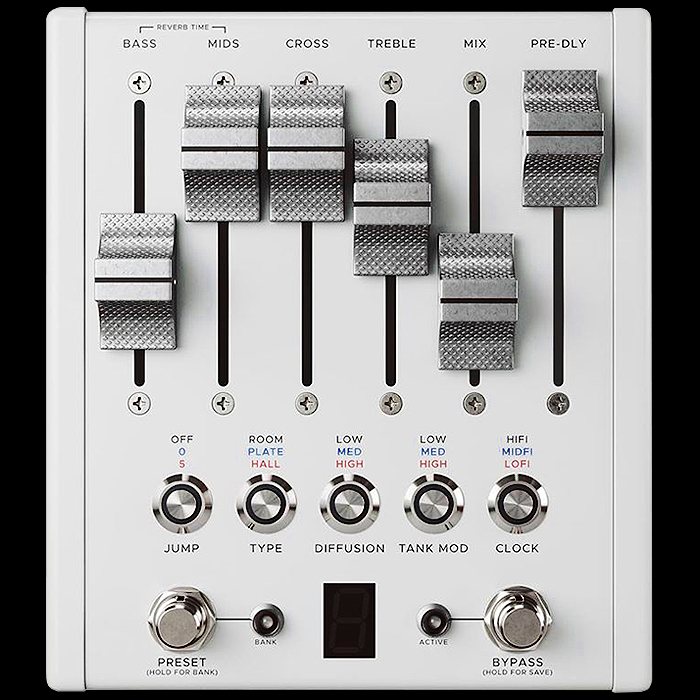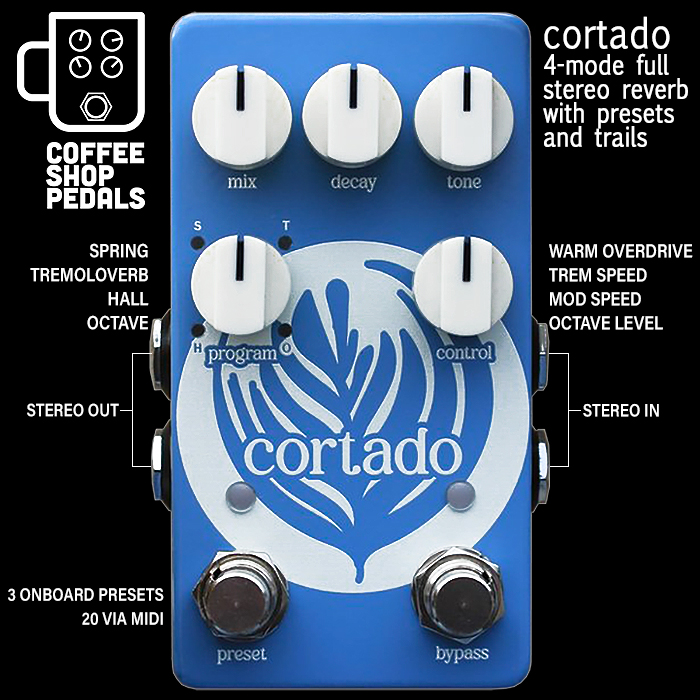Source Audio Merges Nemesis with Ventris to Create Combined New Collider Delay+Reverb Workstation

So Source Audio has made a slightly different move to the one I and a few others expected - I thought we might get a 12+ Mode Modulation Workstation next - following on from the Nemesis and Ventris - and continuing the lineage much like Strymon’s TimeLine, BigSky and Mobius, and Boss’s DD-500, RV-500 and MD-500.
But Source Audio have decided to do a combination of the Nemesis and Ventris into the same format - giving you 5 Delay Modes from the Nemesis and 7 Reverb Modes from the Ventris - which you are of course expected to use in tandem. The two footswitches in effect activate each of the pedal’s channels, with the left-hand one doubling as a tap-tempo for the delay too.
You essentially get 25% of the Ventris - i.e. 7 of 14 overall modes (50%), but without the ability to run 2 Reverbs simultaneously - therefore half of that again. The Nemesis Delay has 24 Modes essentially - so 5 of those equates to roughly 20%. So while combining both Delay and Reverb, the Collider though gives you a much smaller subset of modes - while most of the key features have been retained. It’s pricing is slap bang in the middle as follows - Nemesis = $299, Collider = $349, Ventris = $399.
I’ve had the Ventris for a year now, and it’s the perfect combination of feature-set and format for me - I really like the Dual DSP option - perfect for my stereo rig, but I don’t really like the fact that you cannot switch between presets using the footswitches. This is probably why I acquired the recent Boss DD-200 over the Nemesis. I needed a more compact delay to complement my Strymon Volante, and in that form-factor the options were really Boss DD-200, Meris Polymoon and Source Audio Nemesis. In terms of Algorithms, the Nemesis gives you the most possibilities, but I went for the Boss because of its slightly more elegant control topology and ease of use.
I don’t believe anyone has wholly perfected this size of enclosure control topology yet - I have Boss, Eventide, Meris, Source Audio and Strymon pedals in and around this format, and all have flaws. I’ve always liked my controls to be super intuitive and fully surfaced and clear - so having dual and alternative functions is never particularly usable for me. I feel all here need to work towards perfecting this size of effect - and some sort of visual display is essential - as assigning different algorithms and functions to already labelled options is never going to be intuitive. I feel of all of these, the Boss DD-200 series comes closest to where things should be - but it does not have the Dual DSP ability (that is reserved for the 500 Series), and is limited to just the default 12 Algorithms. Each of Meris, Source Audio and Strymon use lots of secondary and alternative functions and modes - so they have more expandability to a degree. The perfect devices at this level would allow you to scroll through an extended list of Algorithms/Modes - and then surface all the necessary controls - include more presets (4/8 isn’t really sufficient) - and allow those to be scrolled through and selectable via the dual footswitches.
For my own needs I think I prefer the extended range of individual boxes - which means I will keep to the DD-200 and Source Audio Ventris in this area for now. I still though fancy acquiring a Nemesis at some stage. I thought I might acquire a Meris Mercury 7 at one stage too, but that idea has cooled somewhat of late.
As for the Collider - I think it probably leads the field currently at this enclosure size for combined Delay and Reverb. I cannot think of any equivalent sized device that offers more. It’s a rather Vanilla device in terms of the modes included - as the more quirky / interesting ones can only be had on the Nemesis or Ventris as far as I can see. For many players this will be the perfect compromise, and I think it a very decent device at this level - it’s pretty intuitive and straight forward and I feel you don’t really need the manual for this one - I would still have liked to have been able to select Presets via footswitch. Of course you can use the Source Audio Neuro App to access further settings, but the manual does not indicate Extended Algorithm Modes for the Collider - unlike on the Nemesis and Ventris.
Collider Delay+Reverb - $349
As mentioned, this combines 12 of the most popular algorithms from the Nemesis Delay and Ventris Reverb as follows:
- Oil Can Delay (Nemesis Extended)
- Reverse Delay (Nemesis)
- Tape Delay (Nemesis)
- Analog Delay (Nemesis)
- Digital Delay (Nemesis)
- Room Reverb (Ventris)
- Hall Reverb (Ventris)
- True Spring Reverb (Ventris)
- Plate Reverb (Ventris)
- Shimmer Reverb (Ventris)
- E-Dome Reverb (Ventris)
- Swell Reverb (Ventris)
You get all the essentials here, Tap-Tempo, Sub-Divisions, 4/8 Presets and the ability to set Delay and Reverb Settings separately or Lock down the panel settings. From a control perspective the topology follows on directly from the aforementioned Nemesis and Ventris - albeit operated more as a dual-control type variety.
These are all core Vanilla / Mainstream effects with the possible exception of the Oil Can Delay. And while you have access to the Neuro App, I don't see the ability to call on additional / extended modes. I read somewhere you could deploy two delays or two reverbs simultaneously, but could not find evidence of that in the current manual.
I think this is the perfect marriage / compromise of Delay and Reverb for this particular form factor and should suit many players very well. You get that typical Source Audio High Fidelity throughout. This has the same pros and cons as its siblings and in many ways takes on the best of what they have to offer.
Nemesis Delay - $299
I believe this is still the most popular of Source Audio's medium enclosure workstations - with its 12 default Modes / Algorithms and additional Extended 12 Modes available via the Neuro App / Interface - as follows:
- Digital (Collider)
- Diffuse
- Analog (Collider)
- Tape (Collider)
- Noise Tape
- Degrade
- Shifter
- Helix
- Reverse (Collider)
- Sweeper
- Rhythmic
- Slapback
+++++++++++++++ - Resonant Analog
- Tremolo
- Sequenced Filters
- Dub
- Chorus
- Flanger
- Double Helix
- Complex Rhythmic
- Lo-Fi Retro
- Warped Record
- Compound Shifter
- Oil Can (Collider)
I always find it a touch odd assigning alternative modes and algorithms to fixed label destinations - say you decided to replace the default 'Degrade' Mode with 'Dub' from the Extended range - physically and superficially nothing changes, and over a longer period you may forget what you assigned where - unless you get a label printer and cover over - but that process is overly messy and complex in and of itself. The Nemesis could also do with an upgrade to Dual DSP - to match the ability of its siblings and be able to compete on a level footing with the Boss DD-500 and Empress EchoSystem.
I still like a lot about the Nemesis and it's been on an off my wishlist. At the time of its release which sort of coincided sufficiently with the Empress EchoSystem - I much preferred the extended range of the latter, and when the opportunity arose again more recently I went for the new Boss DD-200 over the Nemesis - partly because I really wanted the Tera Echo mode, and partly because I prefer Boss's control topology and how you can control access to the Presets via the footswitches.
Source Audio could move the Nemesis significantly forward with the addition of Dual DSP, and Preset Select via footswitch. I feel everyone at this enclosure level still has to come up with better controls for extended range modes and secondary functions. I feel there really has to be some simple display screen deployed here, albeit the new Boss DD-200 one is really just a touch too simple - it needs better resolution and slightly more characters to be able to fully effectively communicate everything that's going on - the Boss relies too much on acronyms - which you significantly still need to consult the manual for.
I still feel the Nemesis is a great delay, and in several ways is ahead of the Boss DD-200 I acquired instead. I feel I will have one of these anyway some day - for now I will probably hold out for the V2 which will hopefully have some of my niggles addressed!
Ventris Dual DSP Reverb - $399
The Ventris Reverb has 12 Default Modes / Algorithms, and 2 Extended Modes - as follows:
- Room (Collider)
- Hall L (Collider)
- E-Dome (Collider)
- True Spring (Collider)
- Plate (Collider)
- Lo-Fi
- ModVerb
- Shimmer (Collider)
- EchoVerb
- Swell (Collider)
- Offspring
- Reverse
+++++++++++++++ - Outboard Spring
- Metal Box
I went from the Strymon BigSky, to the Boss RV-500 (Dual DSP) onto the Source Audio Ventris (Dual DSP) - where I much preferred the more compact form factor combined with the ability to play back dual reverbs simultaneous - and split across Left and Right stereo channels. I still feel the Boss RV-500 is the most advanced device at its level as it combines Dual Reverb abilities with Delay on each of those too - so really 4 time-based effects simultaneously!
I've rotated round to the Ventris - because it harnessed most of what makes the RV-500 so fantastic, but it very significantly reduces the overwhelming complexity of the bigger Boss box and reduces the footprint. I prefer having a slightly simplified (cv RV-500) more compact Reverb - with still that Dual DSP feature intact - and it has served me very well. In fact the only niggle here I have is the same as for all of these pedals - the fixed labelling where there are additional algorithms and functions available, and the inability to select and activate Presets from the footswitches.
I've been toying with possibly rotating in a Meris Mercury 7 or a GFI System Specular Tempus. But all-in-all the Ventris is still overwhelmingly the best choice for me at this form factor, and provides the best combination of form factor and feature set - even with the slight flaws in its control topology.
Final Thoughts
There is no doubt that the Collider Delay+Reverb is a cool addition to Source Audio's range, and it will be the perfect marriage of Delay and Reverb for many, while for others it may be slightly too much of a compromise compared to what they already have or want at their disposal.
It's very much a mash-up of the Nemesis and Ventris - albeit overall and in real terms you get less than half of what those two pedals deliver individually together. For some the real-estate/footprint will be the main concern/consideration - in which case it's a no-brainer as there is nothing else really comparable at this size. If you like more flavours, and more of the unusual flavours in particular, then this is probably not your ideal workstation.
I have my own idiosyncratic pedal-chain assignments, and following on from the original Strymon Stryfecta (Mobius + TimeLine + BigSky) I have always had individual workstations for those categories - in fact possibly a little overkill now as it has evolved to the current sequence of Boss DD-200 Delay + Empress Zoia (Modulation mostly) + Strymon Volante Magnetic Delay + Eventide H9 Max Multi-Effect (Modulation/Delay/Reverb) + Source Audio Ventris Reverb.
All of us will have our own combination of criteria - tones / feature set / form factor / usability / practicality / price etc. And on most counts the Collider performs really well - individually it would not justify replacing any of my existing incumbents, and it makes even less sense for my setup if made to replace two.
It's a really nice addition to the range, and seeing how many development issues Wampler are having with their Terraform - possibly the reason that Source Audio played to its strengths here.







